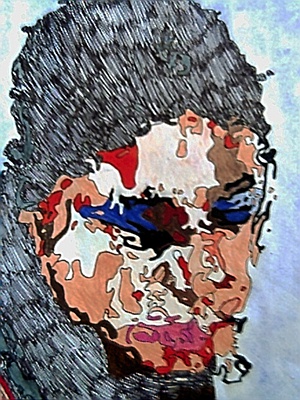All Nonfiction
- Bullying
- Books
- Academic
- Author Interviews
- Celebrity interviews
- College Articles
- College Essays
- Educator of the Year
- Heroes
- Interviews
- Memoir
- Personal Experience
- Sports
- Travel & Culture
All Opinions
- Bullying
- Current Events / Politics
- Discrimination
- Drugs / Alcohol / Smoking
- Entertainment / Celebrities
- Environment
- Love / Relationships
- Movies / Music / TV
- Pop Culture / Trends
- School / College
- Social Issues / Civics
- Spirituality / Religion
- Sports / Hobbies
All Hot Topics
- Bullying
- Community Service
- Environment
- Health
- Letters to the Editor
- Pride & Prejudice
- What Matters
- Back
Summer Guide
- Program Links
- Program Reviews
- Back
College Guide
- College Links
- College Reviews
- College Essays
- College Articles
- Back
Skating at SABAH MAG
Every Sunday for two hours, a group of children, teenagers and adults gather at theAmherst Pepsi Center's Olympic Rink to learn how to ice skate with The SkatingAssociation for the Blind and Handicapped (SABAH). At 10:43 a.m., the firstmember arrives. Robbie is five years old and wears a green tracksuit, with blackstripes down the sides of his pants. His mother pushes him toward Lisa, to whomhe gives a big hug. In return, she hands Robbie a big beach ball to play withbefore the session. He comes over and throws the ball back and forth to me,exploding into a fit of giggles every time I miss. He has the purest laugh, themost innocent-looking face, and Down's syndrome. He soon forgets about the balland starts playing with the laces on his hockey skates.
Families fileinto the rink, and by 10:54, parents fussing over their children fill thebleachers. Students - some elated, some unhappy - make their way down thebleachers. Wearing bulky snowpants and jackets of every color, their discomfortis obvious. Scarves and hats hide every facial feature so that all I can see arepairs of eyes and noses. I am amazed that they can make it down the stairs atall! As the instructors drag out the equipment for the session (chairs, walkers,inflatable balls and hockey sticks), the bleachers explode into a frenzy ofchatter. The crowd is a mass of Starbucks cups and flailing arms.
Peopleof all ages, shapes and sizes with various handicaps step gingerly onto the ice,many falling and crying before they even have a chance to reallyskate.
Soon the students are skating, supported by a volunteer and achair. Some are skating forward and catching an inflatable ball while theirinstructor skates backward. Many lose their balance, but they are confidentand get right back up.
Twenty minutes into these activities, amass of skaters exits the rink to shed their outerwear, which is thrown toparents. Now they skate in jeans and oversized Buffalo Bills sweatshirts.
One of the more advanced students, Jessica, a petite brunette with a ponytail,trips over a ball and falls face first on the ice. Before she starts crying,Holly, a cheery volunteer, rushes over, picks her up, and swings her around.Jessica immediately starts laughing and enjoys the attention from her favoriteinstructor.
Halfway through the session, cookies and fruit juices appearon the table next to the rink. This brings total chaos; everyone rushes off theice and dives into the food. Bryan, a boy of 13, goes through two fruit punchboxes and eats snack after snack. Finally his mother yells, "Enough food! Iwant you to get out there and skate until you can't skate no more!" Bryanthrows the juice box into the garbage and rushes onto the rink. His motherregains her composure and returns to her seat where Bryan's bewildered fatherwaits.
Within ten minutes, the students are back on the ice, and the crowdhas regained its previous level of chatter. Nick, a senior, tries to help a girlwith Down's syndrome get up off the ice, but each time, the girl hits his arm andyells, "I can do it myself." Every time she pulls herself up, andregains her balance, she falls again. She starts crying, but not because of herfalls. Her pink mitten is lying a few feet away, and her hand sits right in apuddle. "My hand all wet!" she screams.
The session comes to anend, but many of the younger and more determined pupils don't want to leave theice. One girl finally begins to skate without any support, but her mom is gettingimpatient.
"Anne, honey! It's time to go home," yells hermother.
"No!" Anne says.
"Anne, right now! We'releaving! You can come back next week," her mother cajoles. Giving up, shewalks onto the ice in her sneakers and drags her daughter off.
I make myway off the rink, watching the instructors and volunteers discuss what they willdo at the next session. Next to the rink, I see Anne, the determined skater, withtears streaking her face, but a big smile and a half-eaten chocolate bar in herhand. Her mom is next to her, holding Anne's free hand, and wiping her ownforehead with a hankie. So ends another SABAH Sunday.

Similar Articles
JOIN THE DISCUSSION
This article has 1 comment.

0 articles 0 photos 12292 comments